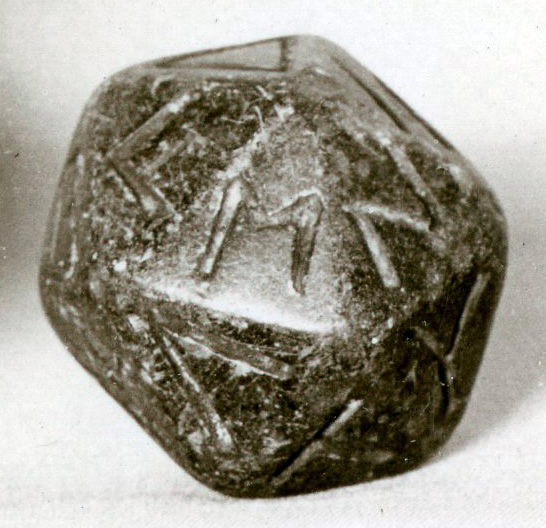Twenty-sided die (icosahedron) with faces inscribed with Greek letters
Ptolemaic Period–Roman Period
Not on view
A number of polyhedral dice made in various materials have survived from the Hellenistic and Roman periods, usually from ancient Egypt when known. Several are in the Egyptian or Greek and Roman collections at the Museum. The icosahedron – 20-sided polyhedron – is frequent. Most often each face of the die is inscribed with a number in Greek and/or Latin up to the number of faces on the polyhedron.
Nothing specific about the use of these polyhedra is preserved, so theories are built on clues provided by some variant examples. One unusual example uses Greek words, a few of which resemble those associated with throws of the astragals (knucklebones), and this has led to suggestions they were used for games. Another remarkable example discovered in Dakhleh Oasis in Egypt in the 1980s records an Egyptian god’s name in Demotic (the Egyptian script of these late periods) on each face. Divination – seeking advice about the unknown from the supernatural – seems to be the most likely purpose for the Dakhleh die: the polyhedron might have been thrown in order to determine a god who might assist the practitioner.
Indeed, even the dice with simple letters might relate to divination: a Greek oracle book composed in in the 2nd or 3rdcentury A.D. refers to throwing lots to obtain a number that would, through certain algorithms, lead to ready-prepared oracle questions and responses.
Due to rights restrictions, this image cannot be enlarged, viewed at full screen, or downloaded.
This artwork is meant to be viewed from right to left. Scroll left to view more.



